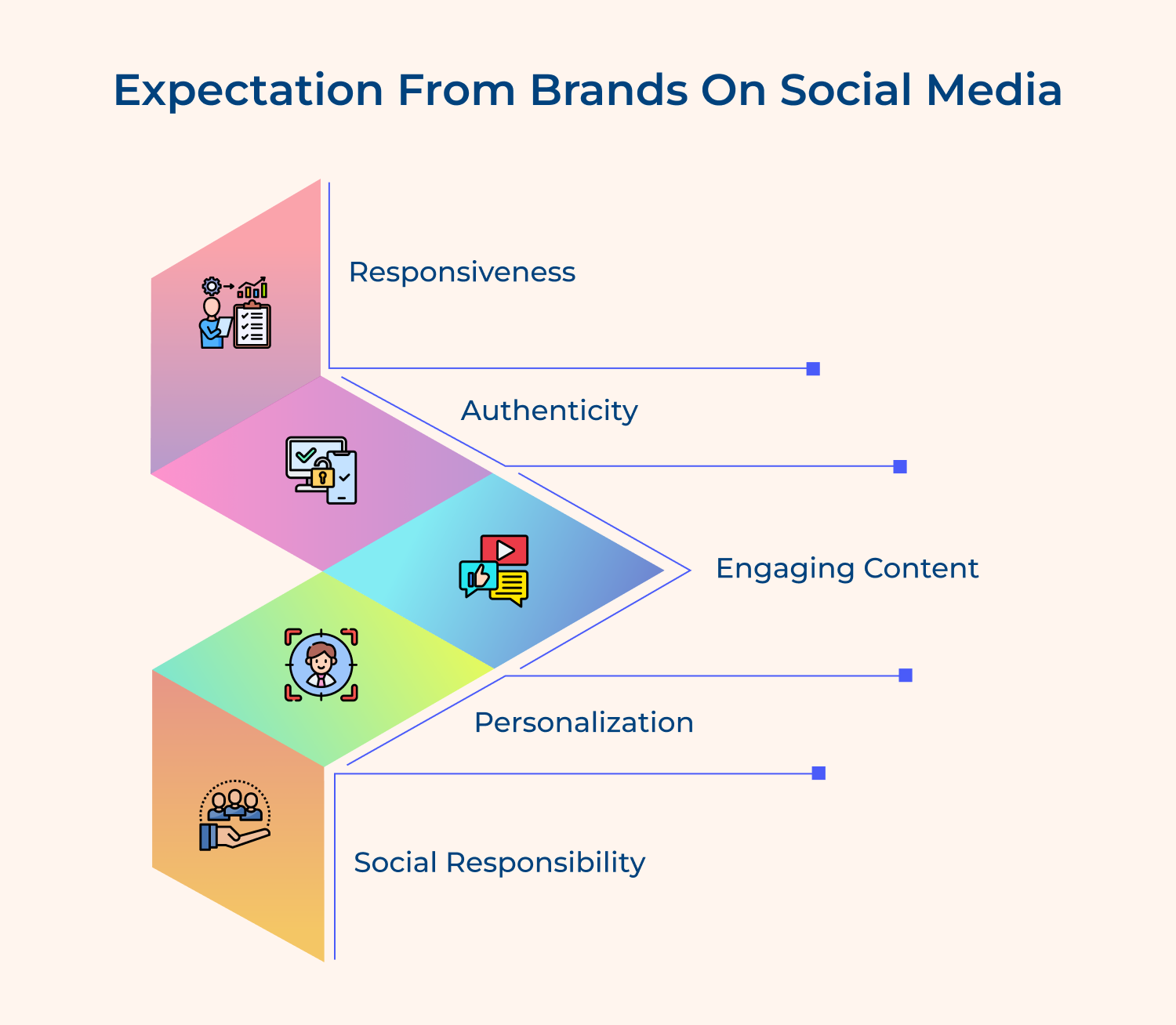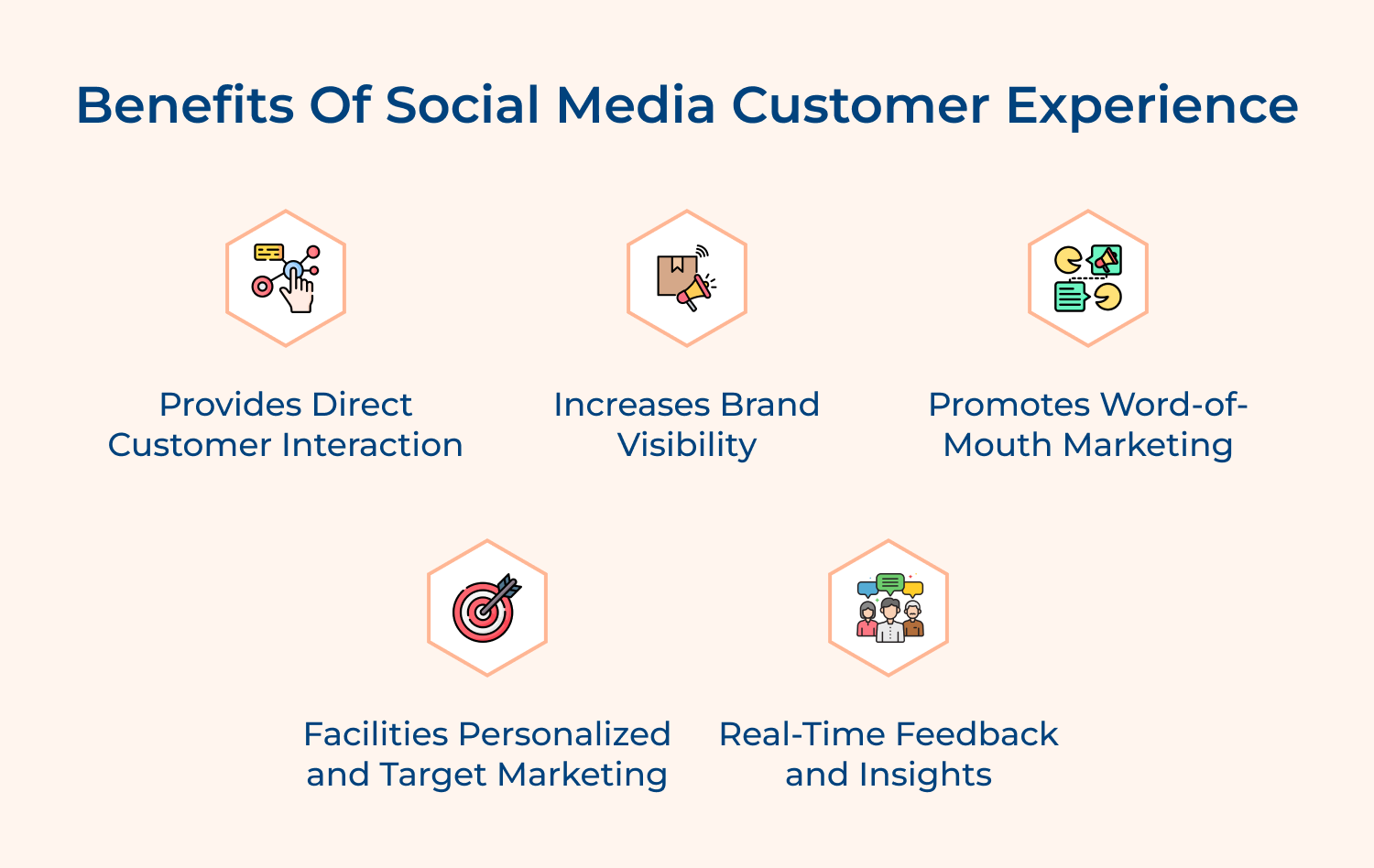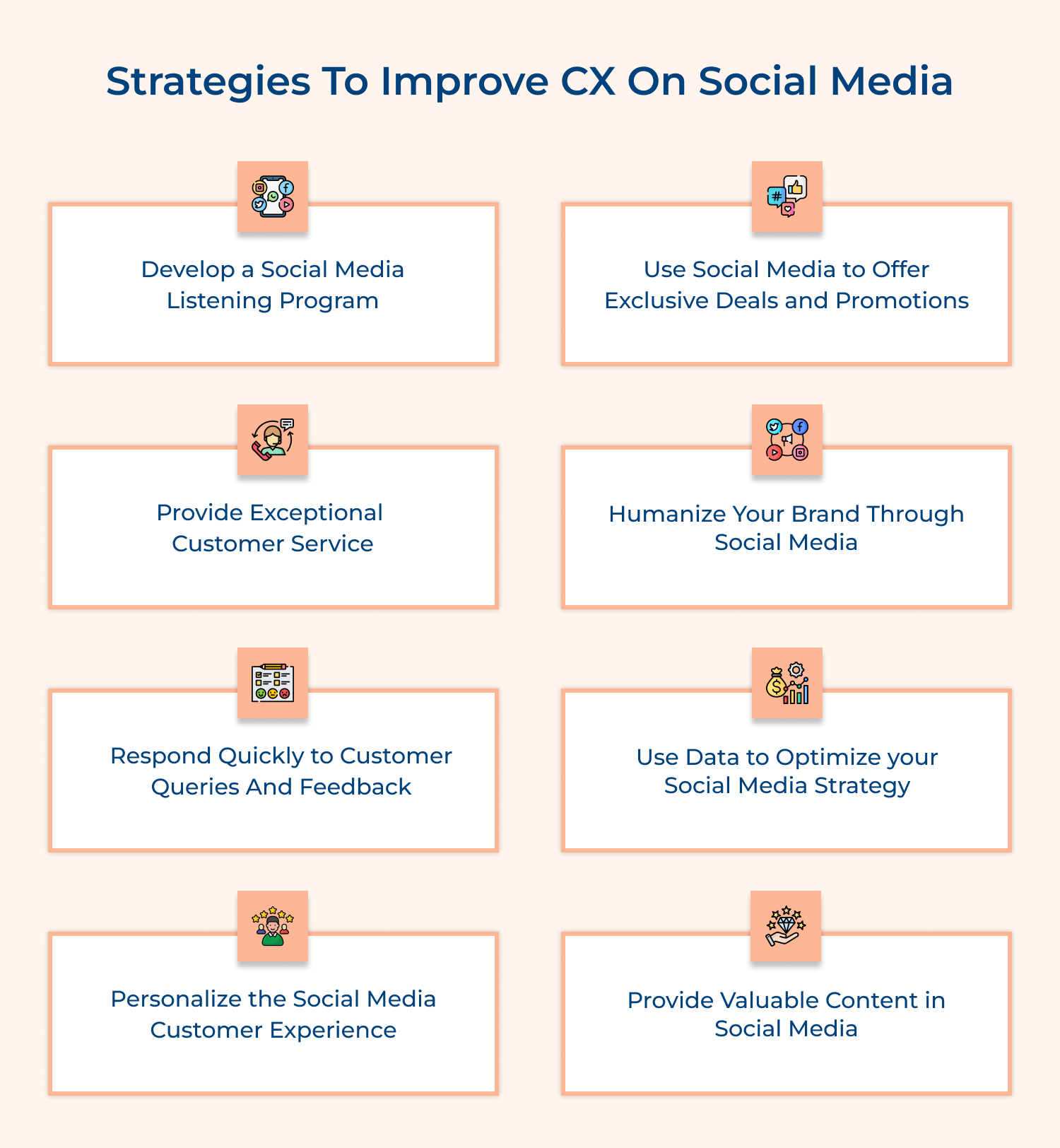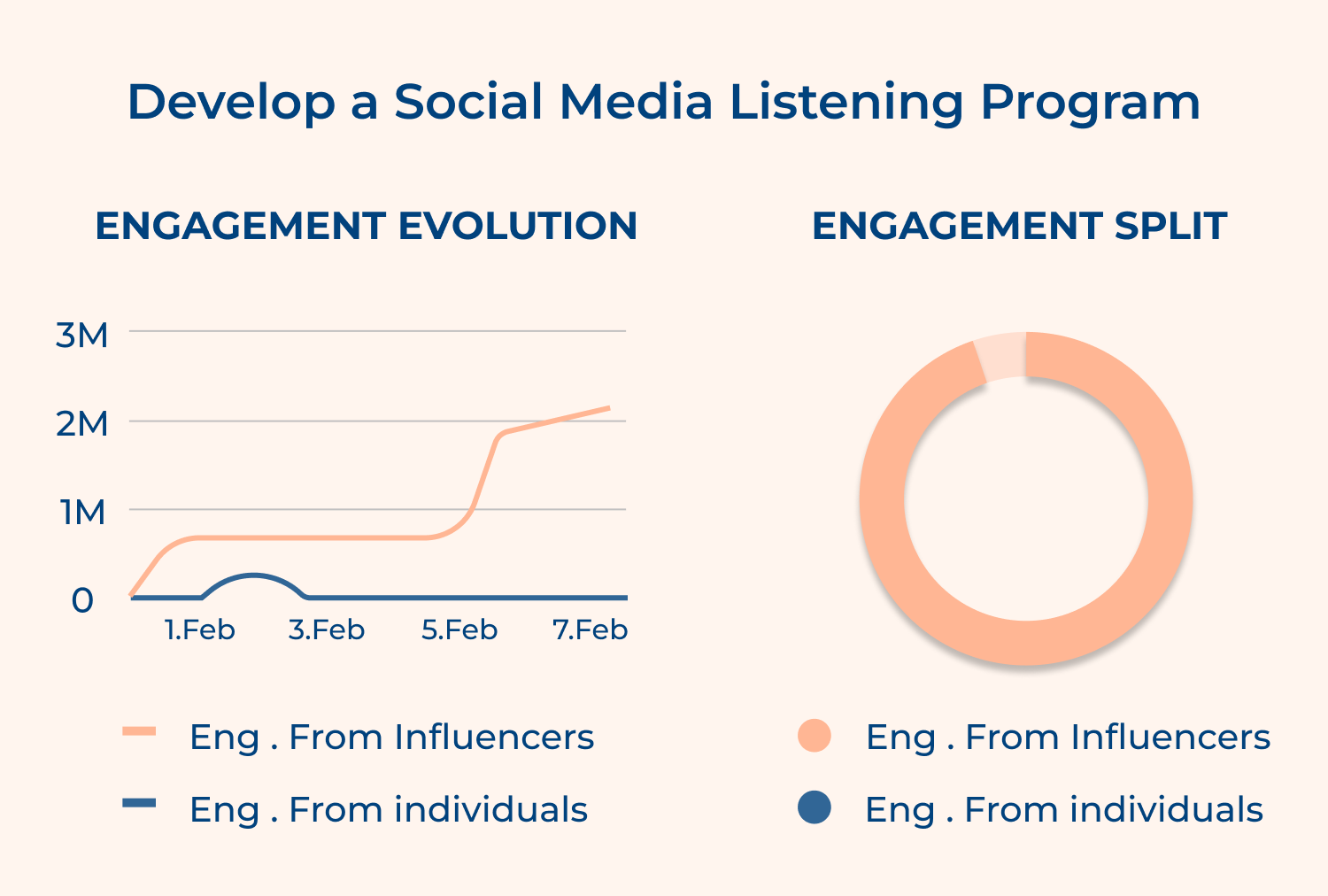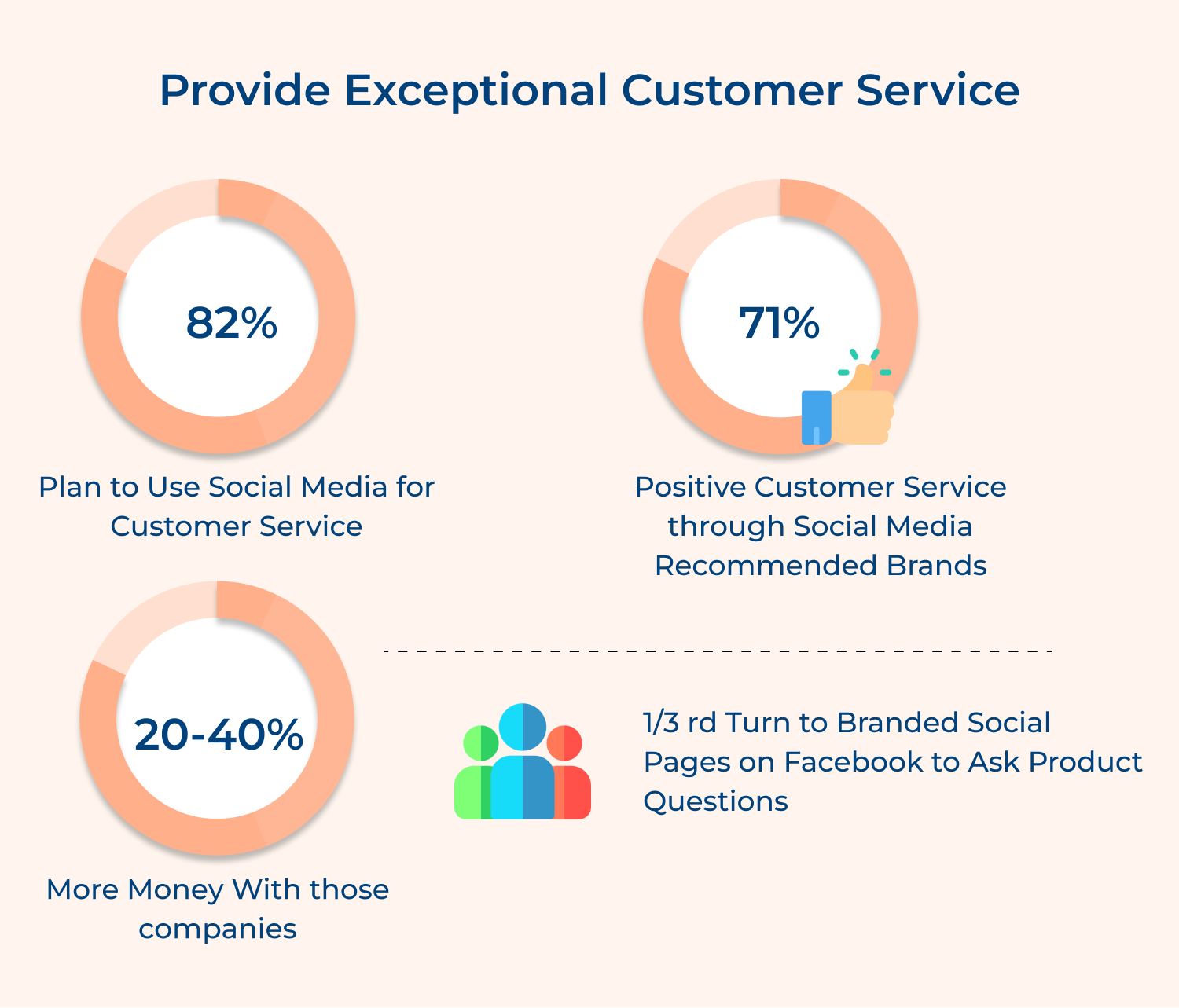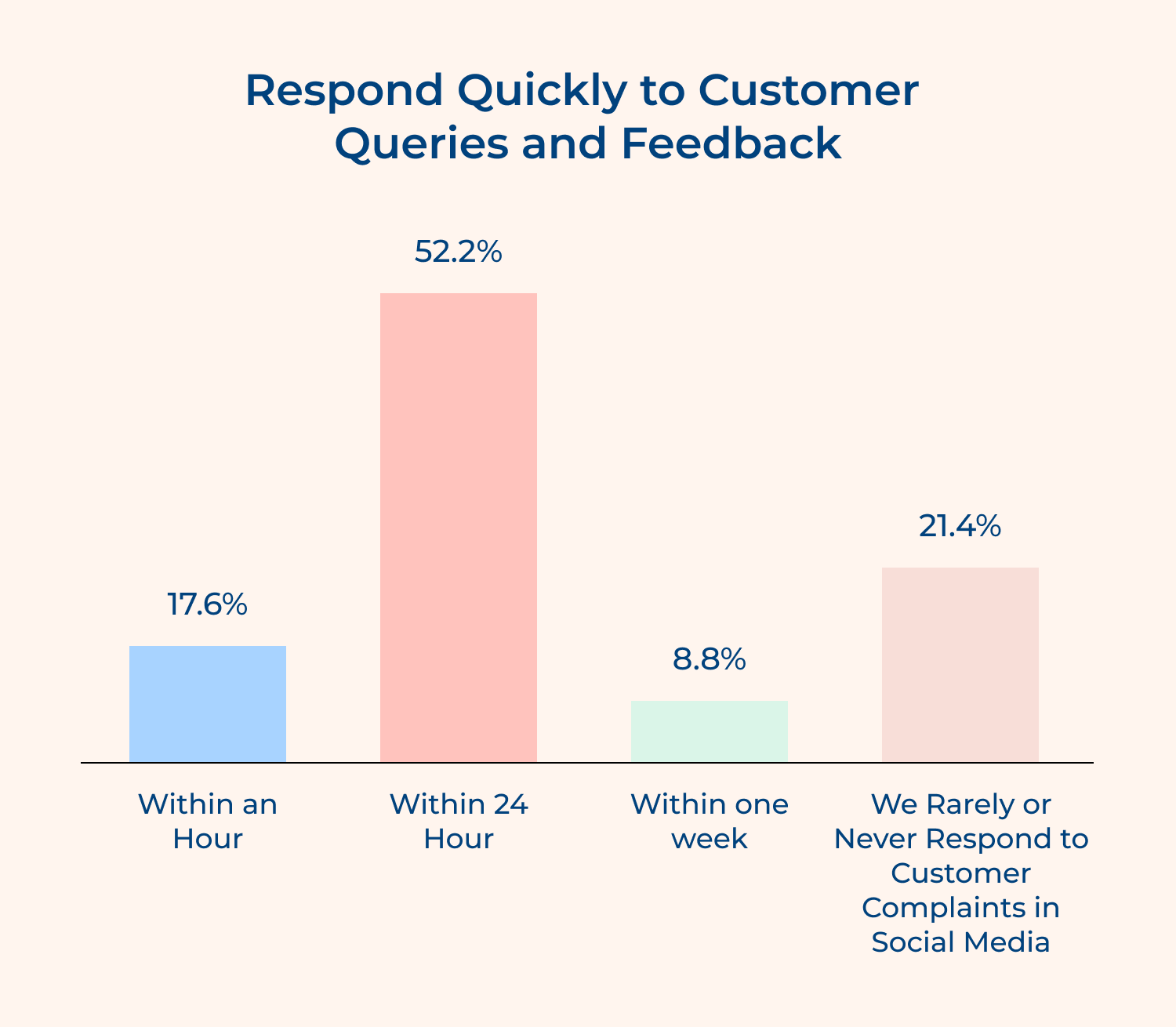When a customer posts a comment or question on your social media page, respond as quickly as possible. It shows your customers that you value their opinions and are committed to resolving their issues.
Best practices:
- Monitor social media channels regularly: The first step to responding quickly is to monitor your social media channels regularly. Keep an eye on your mentions, messages, comments and direct messages across all platforms.
- Use automation tools: Utilize automation tools like chatbots and autoresponders to provide immediate assistance. These tools can handle basic queries, provide FAQs and direct customers to the appropriate channels for further assistance.
- Follow up and close the loop: After resolving a customer query, don’t forget to follow up and close the loop. Reach out to the customer to ensure they are satisfied with the resolution.
4. Personalize The Social Media Customer Experience
Personalization is becoming increasingly essential and social media provides an excellent opportunity for businesses to provide a personalized experience for their customers. By leveraging customer data such as purchase history, search queries as well as social media interactions, businesses can personalize their marketing messaging, offers and recommendations.
Best practices:
- Create engaging content: Content is the heart of social media and creating engaging is key to personalizing the user experience. Be it informative blog posts, visually appealing images, or entertaining videos, the content you share should add value to your audience.
- Respond and engage: Personalization goes beyond creating content; it involves actively engaging with your audience. Respond promptly to comments, messages, and inquiries, showing that you genuinely care about their feedback. Encourage conversations, ask questions and create polls to spark discussions.
- Personalized advertising: Use the knowledge you have gained about your audience to create personalized advertisements. Social media platforms offer robust targeting options, allowing you to reach specific demographics, interests, or behaviors.
5. Use Social Media to Offer Exclusive Deals and Promotions
Social media is a great platform to run promotions and offer deals to your customers. By offering exclusive deals to your social media followers, you can build customer loyalty and create excitement around your brand.
Use social media to announce new product launches, sales, and special events.
Best practices:
- Timing is key: Timing plays a crucial role in the success of your social media promotions. Analyze your audience’s behavior and choose the best time to post.
- Use hashtags and influencers: Hashtags are an effective way to increase the visibility of your promotions. Include relevant hashtags in your posts to reach a wider audience. Collaborating with influencers in your industry can also boost your promotions by leveraging their large following.
6. Humanize Your Brand Through Social Media
Social media provides an opportunity to show the human side of your brand.
Use social media to showcase company culture, highlight employee achievements and share behind-the-scenes glimpses of your business.
Best practices:
- Show the faces behind the brand: People relate more to faces than logos. Share photos/ short videos of team members engaging in activities related to your brand. The personal touch will create a sense of authenticity and help your audience connect with your brand on a deeper level.
- Tell inspiring stories: Storytelling is a powerful tool to humanize your brand. Highlight customer success stories, employee experiences, and community initiatives that are relevant to your brand’s values.
- Share behind-the-scenes content: Give your audience a glimpse into the everyday workings of your brand. Show them what happens behind the scenes, such as product development, team meetings, or events. The transparency will humanize your brand, making it more relatable and approachable.
- Create a consistent brand voice: Develop a consistent brand voice that resonates with your target audience. Use a tone that aligns with your brand’s personality and values.
7. Use Data to Optimize Your Social Media Strategy
Implement data analysis to optimize your social media strategy.
Understand which channels are providing the most engagement and use the information to refine your social media approach. Track key performance indicators such as reach, engagement, referral traffic, and conversions.
Best practices:
- Track relevant metrics: Focus on the metrics that align with your objectives. Common social media metrics include reach, engagement, clicks, conversions and audience demographics.
- Analyze audience behavior: Understanding your audience’s behavior is crucial for optimizing your social media strategy. The data will guide your content creation and posting schedule, ensuring that you reach your audience.
- Utilize analytics tools: Social media platforms provide robust analytics tools that can offer valuable insights into your performance.
8. Provide Valuable Content in Social Media
Social media can also be used to provide valuable content that enhances the customer experience.
Businesses can use social media platforms such as Instagram and YouTube to provide educational content related to their products/services. It can help customers make informed purchasing decisions and improve their overall experience with the brand.
Best practices:
- Engage in conversations: Social media is not just about broadcasting your content; it’s also about engaging in conversations with your audience. Respond to comments, answer questions and acknowledge feedback.
- Educate and inform: Valuable content should educate and inform your audience. Share industry insights, expert tips, or how-to guides that offer practical value to your followers.
- Provide value across different platforms: Social media platforms vary in terms of user behavior and content formats. Adapt your content strategy to each platform you’re active on. Tailoring your content to each platform ensures maximum impact and engagement.
Examples of Exceptional Social Media Customer Experience
Leveraging social media platforms can lead to exceptional customer satisfaction and create lasting relationships with consumers.
Let’s take a look at some of the best real-time examples of how different sectors are leveraging social media for exceptional customer experiences:
IBM
IBM, a multinational technology company, effectively leverages social media platforms such as Twitter and LinkedIn to engage with its B2B customers. They regularly share informative content, industry insights, and success stories, which help to create a strong online community. It actively monitors social media channels to address customer queries promptly, ensuring a positive customer experience.
Starbucks
Starbucks, a global coffeehouse chain, has a strong social media presence across various platforms. They utilize Twitter to engage with customers in real time, responding to queries, addressing concerns, and sharing updates on new offerings. Starbucks also leverages Instagram to showcase aesthetically appealing images of its products, creating a visually appealing brand experience for its customers.
American Express
American Express effectively uses social media platforms to provide exceptional customer service. They have a dedicated Twitter account, @AskAmex, where customers can ask questions, report issues, or seek assistance. The team behind @AskAmex promptly responds to customer inquiries, offering a seamless and personalized customer experience.
Cleveland Clinic
Cleveland Clinic, a renowned healthcare provider, has leveraged social media to educate and engage with patients. They utilize various platforms, including Twitter or YouTube, to share informative content, expert advice, and success stories. Cleveland Clinic’s active presence on social media has not only enhanced patient education but has also fostered a supportive online community.
Airbnb
Airbnb, an online marketplace for accommodations, has utilized social media to personalize the booking experience for their customers. They actively engage with their community through platforms like Twitter or Instagram, sharing user-generated content and highlighting unique stays. By showcasing the experiences of their customers, Airbnb creates a sense of belonging and excitement, ultimately enhancing the customer experience.
Utilize Social Media for Superior Customer Experience
Social media has become an integral part of our lives. From connecting with friends and family to discovering new products/ services, social media platforms have evolved to provide a superior customer experience. Brands are now realizing the importance of utilizing social media as a primary channel to engage with their customers.
Social media can be leveraged for exceptional customer experiences. Utilizing social media platforms effectively, businesses can connect with their target audience on a personal level, build brand loyalty and provide timely support. It is evident that social media has become an indispensable tool for enhancing the overall customer experience and should be an integral part of any business’s marketing strategy.

